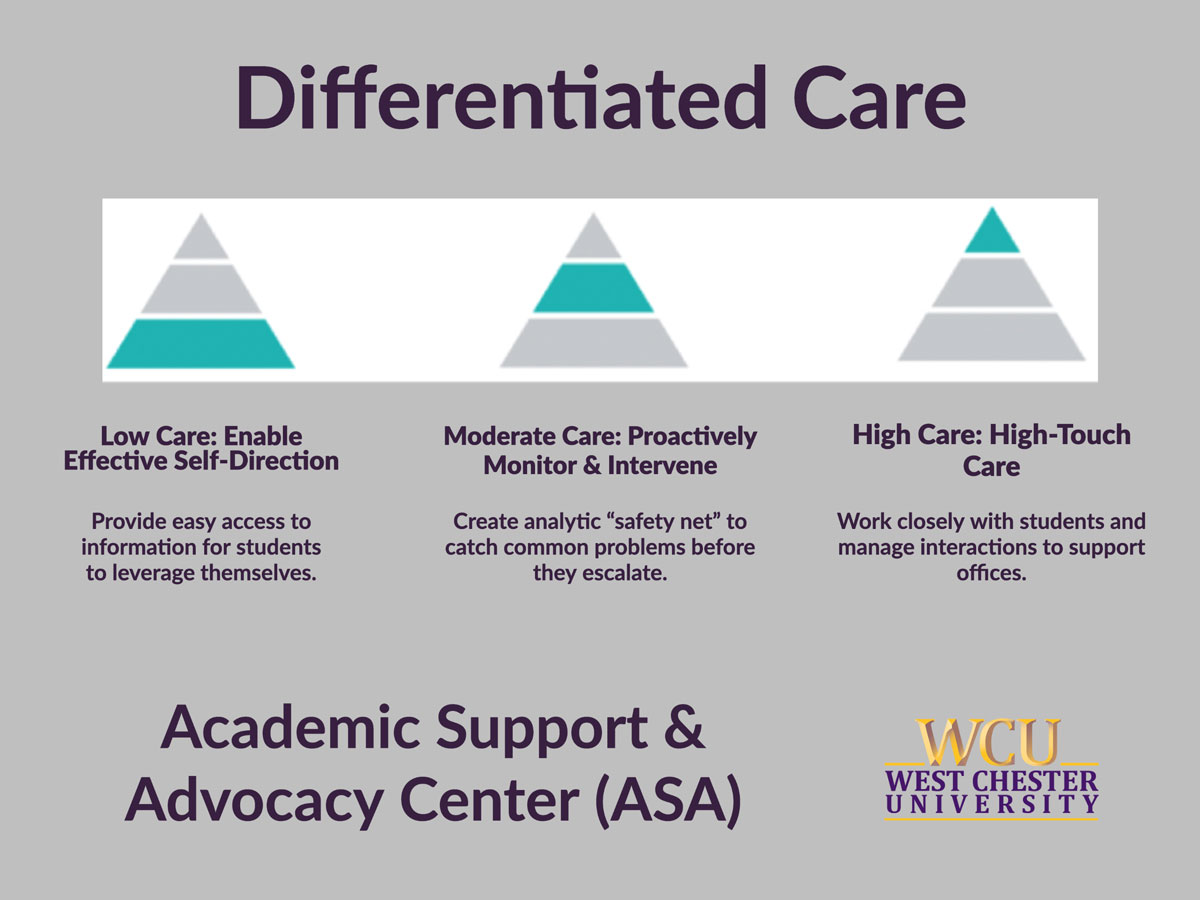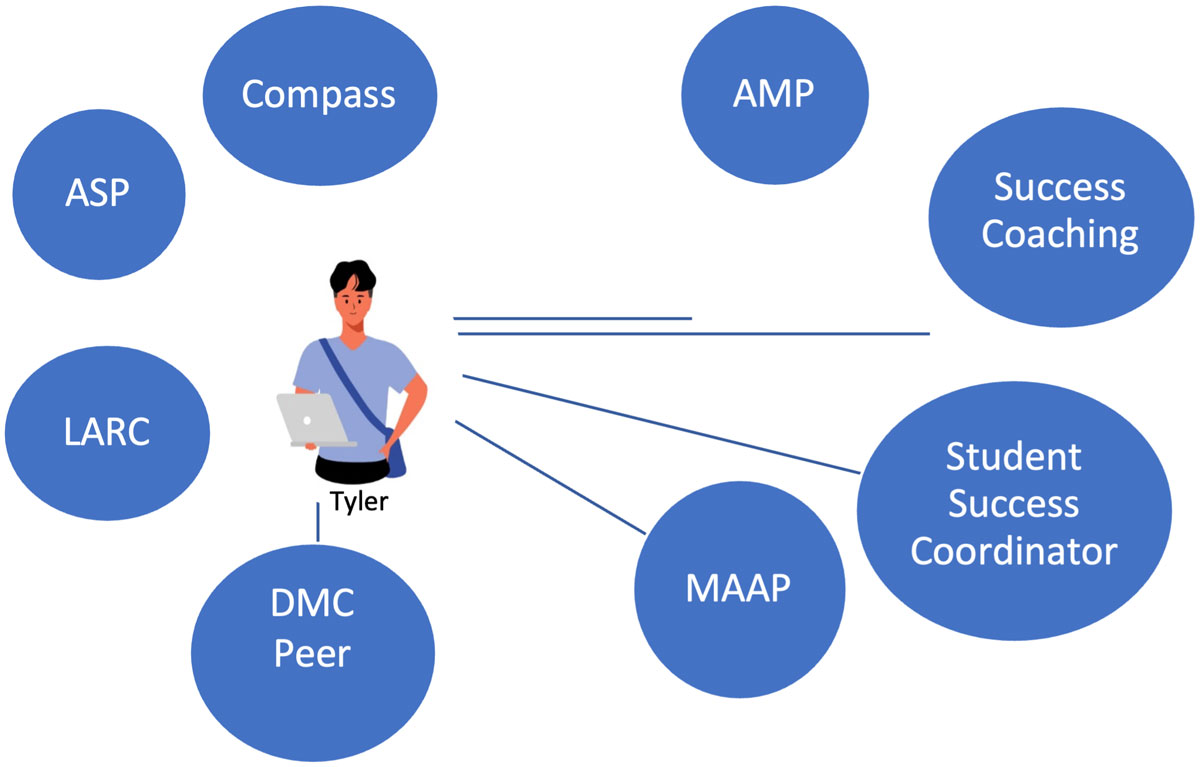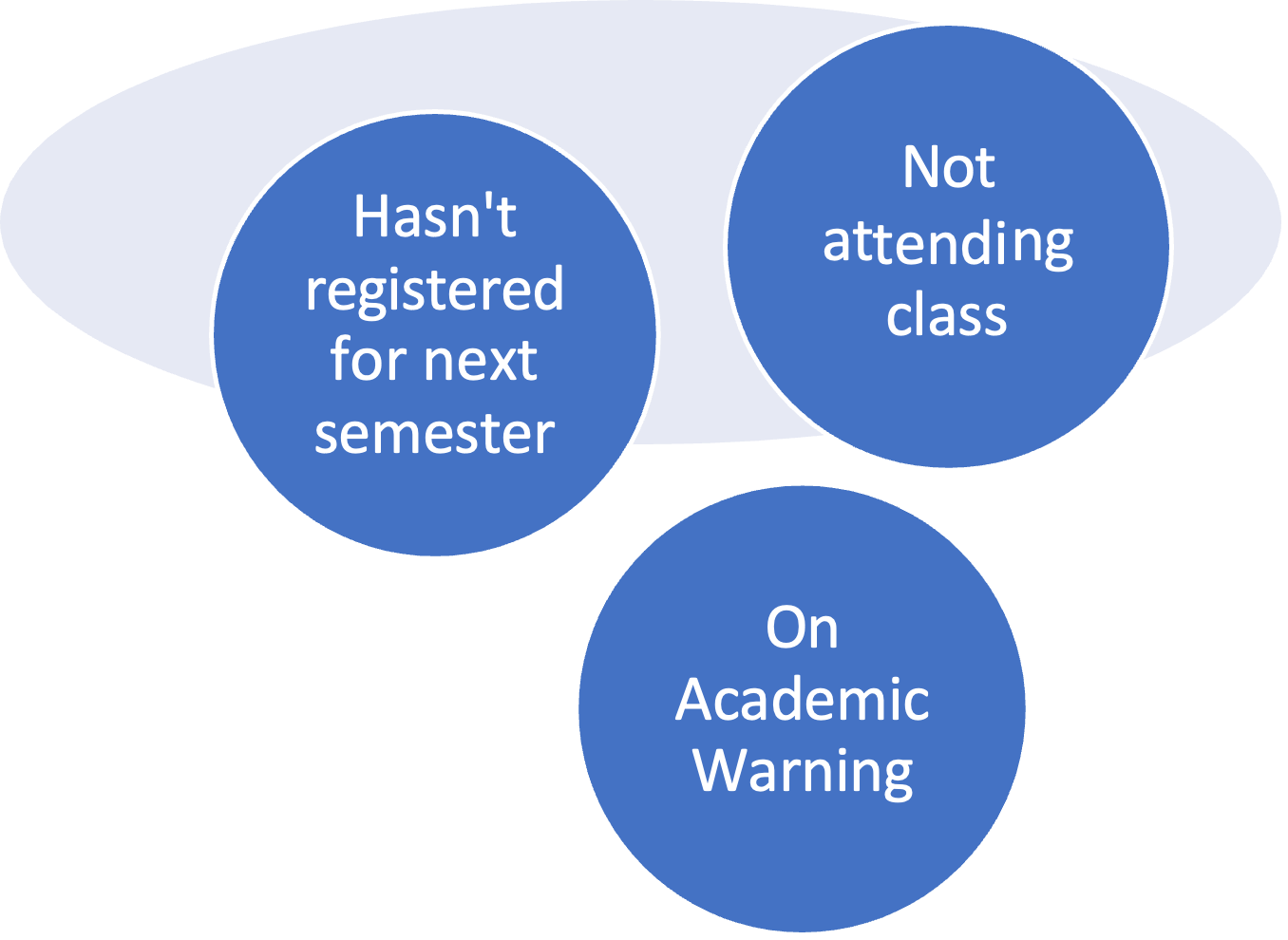Research and Common Language
This section is meant to offer an overview of the language we are utilizing with ASA, and to connect the community to the research and data that were utilized to draft our initial approach to researching and designing the university support model. We do want to reiterate that the model is continually being discussed and adjusted to meet the needs of WCU students and faculty.
What is Differentiated Care?
Differentiated care recognizes that proactively understanding what level of care a student might benefit from allows the university to strategically scaffold care for students as a preventative rather than as reactionary. The below graphic shows how a university might distinguish between student care needs and align resources based on care. This differentiation can be done regarding support services such as tutoring, writing center, financial support, etc. It can also be done when we think about facilitating student enrollment and the differentiated steps students might need to take based on the level of support, they need in navigating registration.

Note: we intentionally utilize the word “care” instead of “need” because WCU believes the focus isn’t about a deficit within our students, but instead about the responsibility the institution must see how we can support and champion our students’ success.
What is Coordinated Care?
Coordinated Care takes the responsibility off the student to navigate the institution, and instead makes the institution responsible for coordinating care for the student. In coordinating care, the University will help to prioritize supports based on the student’s need, will customize the supports for a student, and will help to ensure communication, coordination, and priorities are clearly streamlined. We like to say it doesn’t put it on the backs of students to figure out what communications to pay attention to or what supports to prioritize.
The below graphics show how care can look in both an uncoordinated and coordinated approach.
In a traditional model, a student would receive communications/outreaches from many different offices offering supports. These multiple outreaches are well-intentioned but may be confusing for a student to prioritize.

In a coordinated care model, student would have an advocate who coordinates care for students. This advocate would have opportunities to build relationships with students throughout their transition to WCU such as being at accepted student day, orientation, student events, etc. As alerts/cases are issued for students this information would go to the advocate to help connect students with resources.
The below figure shows how student feedback would go to an advocate who is assigned to help connect students with resources.
The advocate helps to take the burden off the student to figure out how to connect with services, prioritize care, and navigate the institution. Instead of receiving outreach from across campus, the advocate is the primary contact with the student.

This is very similar to the successful COMPASS program we are currently utilizing. The Academic Support & Advocacy Center aims to scale the success of COMPASS to help coordinate differentiated care strategies to more students.
How do we understand Advocacy or an advocate?
We utilize the word advocate to denote the university professional who helps to provide high-touch care to students. This individual is helping students connect with resources, collaborating across campus to develop plans that support student success, and being a regular resource to the students they care for.
Advocacy is most often found to not be tied to a student’s discipline. It doesn’t replace discipline-based supports such as faculty advisors, student success coordinators, chairs and deans. However, it is often outside of the discipline and students connect with an advocate for their entire tenure, so that the advocate doesn’t change if a student changes majors or colleges. An advocate does not replace faculty advisors but supplements their work.
There are many aspects of advocacy that WCU is still determining. For example, particularly in the formation phase of ASA we are determining how students will be connected with an advocate, which students will have an advocate, how the advocate will proactively community with faculty and staff who are also supporting the student.
